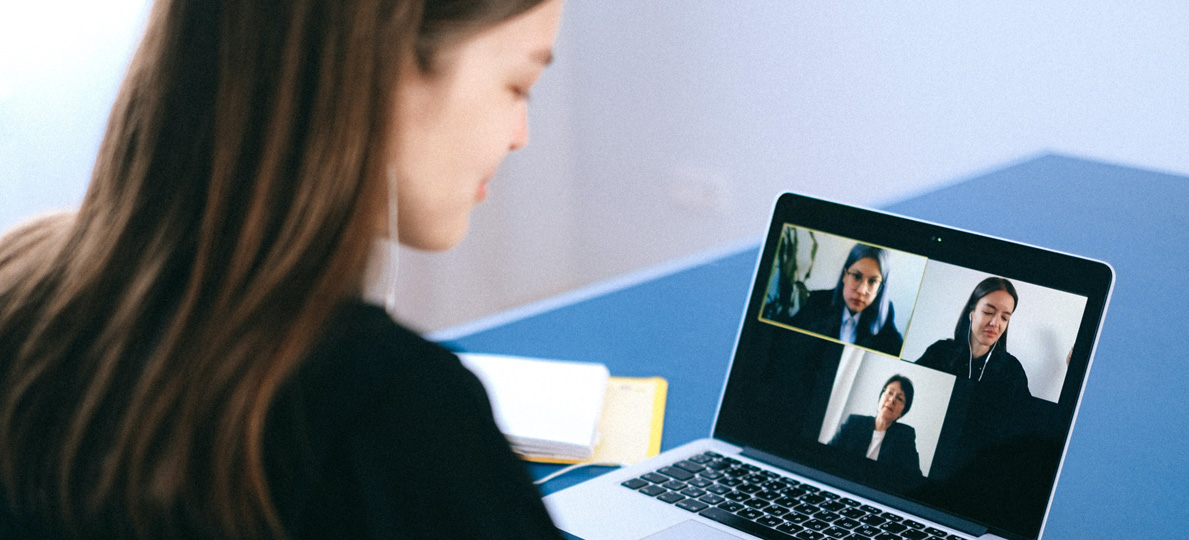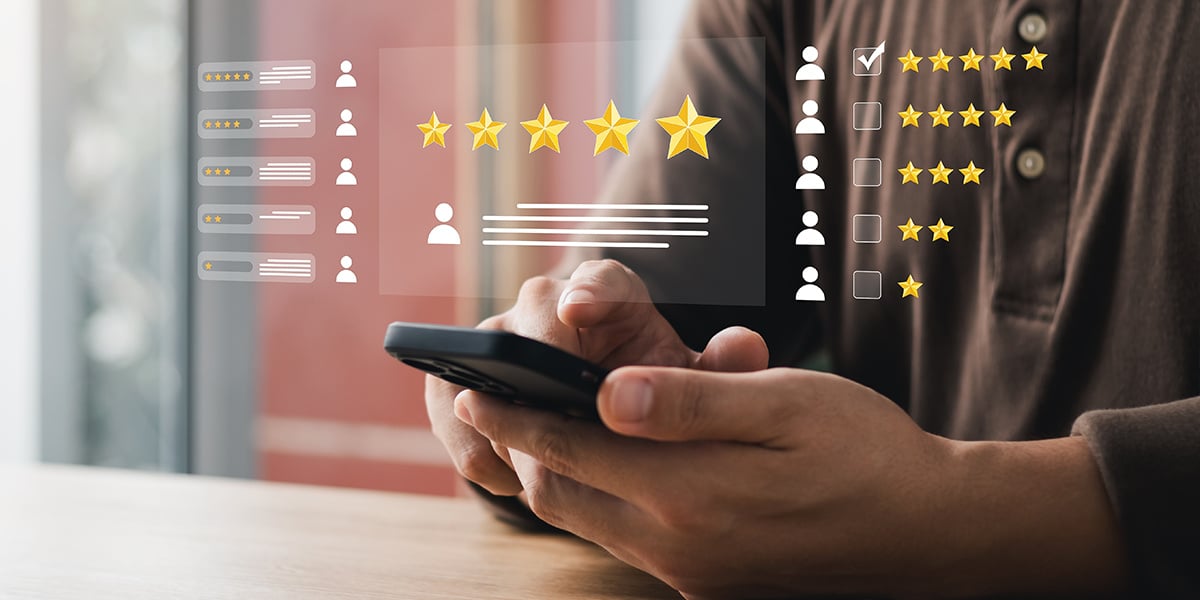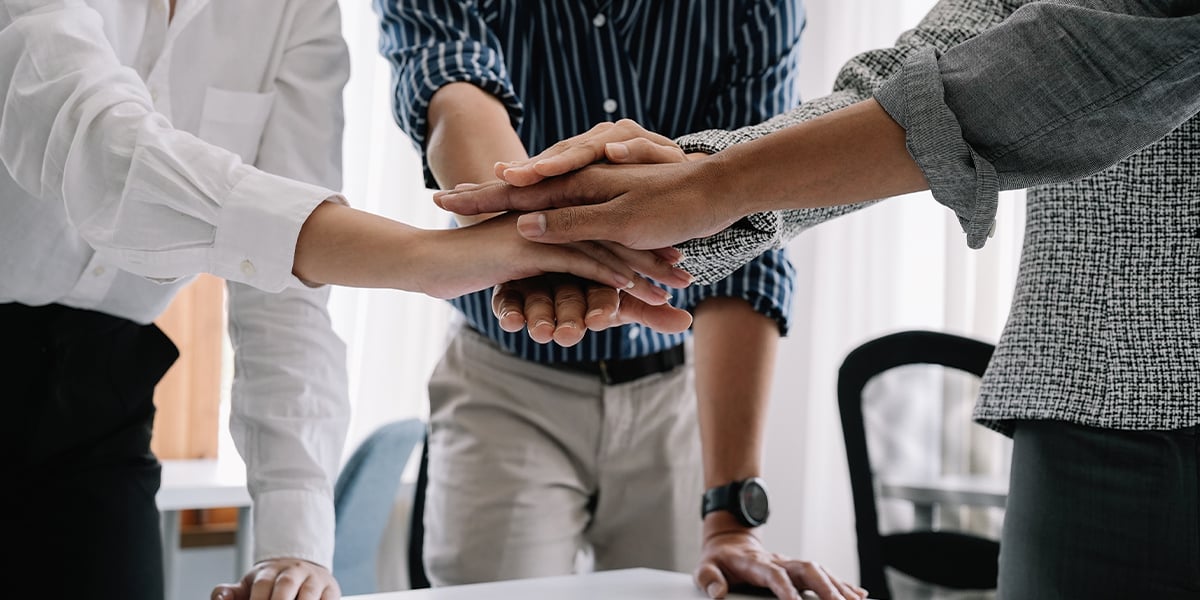Is it too late? Will video still be the most popular channel in the post-pandemic world? Stuart Fearn, Head of Customer Contact at Newcastle Building Society, believes it will. Before the pandemic, he had never thought that video could be a way to connect with customers. Stuart explains how this solution became an integral part of their customer success strategy.
Episode 49
Episode Summary
The COVID-19 Pandemic Has Transformed Customer Service
A year ago, Stuart Fearn was convinced that video consultations were a vision the Newcastle Building Society would achieve in the long-term future. This vision became a reality once the pandemic started and businesses were forced to discourage people from entering the high street. Working hours and the number of staff per branch were reduced. The idea of connecting with customers via video became the only possible solution to provide the same level of service from home. However, implementing entirely new technology is never an easy task.
A year has passed, and Stuart believes that video is the way to go. A recently conducted survey showed that almost 60% of the NBS customers were willing to somewhat willing to use video to speak with staff members. Does it mean video could eventually replace face-to-face customer service?
Will video replace face-to-face service?
In 2021, no one needs to read the latest data from Statista to know that everybody uses video. Most likely, you are one of the users yourself. How convenient is it to arrange a video call instead of being bothered to go to the town? One could almost think that sooner or later, customer service will be fully digitalised, and there will be no need for physical branches. Is this the case of the Newcastle Building Society? Stuart Fearn doubts it is. According to his latest survey, 40% of customers still prefer face-to-face service over a video chat. However, every business should be familiarised with the latest technology and the benefits it could offer. The challenge is to know what exactly to deploy and when to use it.
Is video a customer’s challenge or a colleague’s challenge?
That is the question. Managers often tend to overly focus on customers and forget that their employees need to get used to the new technology as well. Passing paper and booklets across the table and sharing a screen in a video chat is a huge difference. More than often, the employees may display a level of scepticism, which is likely to change if they are given proper training.
What is your view on video consultations?
This article summarizes podcast episode 49 ” How Video Consultations Enhance Customer Experience " recorded by CX Insider. For more information, listen to the episode or contact Stuart on his LinkedIn profile.
Written by Valentina Svobodova
Full episode transcript
Stuart: Everybody you know, everybody's got in the video, everybody's using it. That little function that was on your phone and now everybody uses it. Video calls are happening all the time these days. It's definitely replaced a telephone call. I think I can't remember the last time I did a telephone call.
Valentina: In today's episode, we have a guest who appeared on our podcast for the first time in May 2012. Back then, we invited him to talk about branch optimisation during the covid-19 pandemic. Today, Stewart Fearn, Head of customer contact at Newcastle Building Society, one of the 10 largest building societies in the UK, reflects on the ups and downs and the challenges the building society has been facing in the last year. In today's world, where everything is moving to digital, decision-makers are asking themselves, what's the meaning of high street and physical branches? It has been an ongoing discourse since the rise of the Internet. Right. And business leaders still don't know the answer for it. Well, Stewart's vision of the branch of the future has always been very clear, and that is to serve the wider community they are part of both online and offline.
Stuart: We believe that there are bank communities currently and there is a significant size of some of these communities. So there's lots of people in those communities that want banking. We've just done a survey recently with a local authority and that survey had a really high response and identified that within that community, a significant requirement was there for banking facilities on the High Street. So they weren't particularly satisfied with using the post office. That wasn't the answer that they needed every time. And they pointed towards the types of services that we offer as a building society. Now, I think the thing is, is we aren't you know, these things can't happen unless they're financially viable. So that's got to be a very important point. So financial viability is key. However, if liability is there and if you can build a model that enables access to cash on the high street, that it's viable, that's successful, that has probably has huge potential as well, why wouldn't you offer it? We believe we've got a model that does that. But our model is one of partnership, is working with others. It has been recently with local authorities. It could be a local community, group or a trust or somebody in that community who's got the community at heart. It's got the support of the community with the community to deliver services and not just banking services, usually, usually other things. So, you know, some of our examples of where the that community groups got together to provide library service, the police station is based in there, the bus booking services is based in there, the post office is based in there. And actually we're just another service.
Stuart: But the fact is, is it's kept it maintained on the high street. So we've been able to help with that. We've got other places where the last bank in town left completely. And what local authorities are asking, could you come and support those and be a bank? Now we're a building society because the banking facility on the High Street. And could you help us with our, could you also help us with our, with our need to keep a maintain a library? So that's a partnership piece. And we've got lots of these offers and people want to work with us. But partnership and working together is really important. I see recently some banking clubs have been set up with banks and the post office, and that's just happened across the country. Well, it's a great it's a great it's a great idea. It's a good concept. We've been doing that concept for quite a long time in terms of offering our services blended with others. But what I see is this potential in that even for ourselves to work with others, to work with banks, to enable banking services to be still available and those to be the building society within that town? And I think the case in the end, the banks have a responsibility, however, to be there. But I'm sure we simply say, OK, and we're quite happy to fill that void if we can make it successful and probably if it's in our region where we're very much a northern-based building society. But what that means is the opportunity to rest across the rest of the country for others to do something similar.
Valentina: When the pandemic started, businesses had to adapt quickly in a matter of days, plan short term, long term strategies. And that included not only the implementation of safety measures in physical branches, but primarily new technology.
Stuart: I think a year ago I just started when I first met you and you guys and talk to on the podcast. We were just at that stage of trying to understand how to deal with COVID properly and what impact it was having on our business and where we needed to go with regard to technology and how to best provide the service that we were offering. What we also did is we reduced our operating hours in line with the desire by the government to discourage people from entering the high street. So we went from a normal operating room of nine till five o'clock down to ten till two. So it was significantly reduced. But again, we got into a rhythm of being able to open back to normal hours, provide full services, let customers continue to deal with, as others have done previously. But what we also did is we encouraged them to use our digital channels and to use the telephone channels and not necessarily come face-to-face. If they didn't need to do face to face, we didn't need to force them through that process. We need to make sure they could access any service they could in the easiest way and from home if it was possible.
Valentina: Do you remember Brian Kale, a New York-based millennial from Episode 46 called Stop Asking Your Customers to Call You? He had very interesting views on the future of customer service.
Brian: I think the future is automation, no phone calls and value-driven conversations.
Valentina: Stewart, on the other hand, holds quite a different perspectives on this topic.
Stuart: We're not, let me be very clear, we're not anti-digital and we're very much a digital organization. Now, for most people who don't know very well. We are a building society we're 160-year-old building society. But at the end of the day, we're also a digital business. We provide banking services to challengers, people entering the banking market, new banks. We provide services to enable them to enter the banking market. And that's digital. That's online. That's not face to face. However, in our branch situation, we we have, people have a clear need for high street banking face to face with us. And we believe that where we can, we should digitize the process, enable digital customers to use digital means or self-service in some respects. But it's got to be at the right point. I think the key is the only one that replaces the other completely. The two should have to work hand in hand and customers should have a choice because there are different points in time when customers need digital and that point of time and they definitely need a person need that human interaction and that can be age-related. It could be as people get older, they determine that they need to see the person face to face because of vulnerabilities and needs. It can also be it could be somebody in just a certain point in the in their in their life to be the very first purchase of a house, the very first savings account of the very first ice that they invested in the that isn't always done digitally. I think people move to digital when they're comfortable with something. Quite often they come away from digital when they actually want to see somebody and see the way somebody dies. And we offer that service. But it's really about making sure we offer the right thing at the right time.
Valentina: What do you do when a majority of your customers rely on physical branches and suddenly the government tells you to discourage people from entering the High Street? Well, Stuart and his team came up with a brilliant idea.
Stuart: Everybody you know, everybody's got in the video, everybody's using it. That little function that was on your phone and now everybody uses it. Video calls are happening all the time these days. It's definitely replaced a telephone call. I think I can't remember the last time I did a telephone call. I've done video on my telephone that's personal or at work. Video has become a part of people's lives. So I believe and we're looking at this right now, is that probably a year ago, 15 months ago, we would have said it's not for us at the moment. It's down the line. But we can clearly see now that video, people are using video every day. So video for banking services and for advice is really probably an important thing to provide today. I've just done a survey. And some customers, it's ongoing, but at the moment, 60 per cent of them said they're very willing to somewhat willing to use video for the banking services and the financial advice. Now I would never have expected that result year and a half ago. We've just had that result only, only this week. And I think that proves something there, I think apps, you know, we're probably a bit late to the market with an app to be honest. But again, it doesn't be a priority for us in the past. But we clearly see that having an app is an important point. Is a hygiene factor really, but again, it's about how good is the app and what does the app do for you? What can it do and how can it develop in the end? Is it just information, information app or actually can you practically do things to it? Could you link to videos, for example, in future? And I think these are all developments that will move forward on.
Valentina: Deploying an entirely new technology in your organization is a difficult task, especially if you're not sure whether it's going to work. The results from customer satisfaction surveys are never black and white. You may face a certain level of skepticism from your colleagues and you are forced to take risky decisions. This was certainly the case when the Newcastle Building Society decided to implement video as another channel in their customer service management.
Stuart: We now hold video, we hold seminars, big talks with our customers and we do an awful lot of education around finance and whether that be with customers, with local community groups, school groups, we do an awful lot of talks around how best to manage finance. We've done video for six months - eight months now. We've had some amazing interaction, some amazing experiences. And again that's developed people's view of video. And made them think there's more we can do with, this is more we can do with video. So and it's the confidence that's building. And then you get the point of video with customer. Well, we've had to do it because of pandemic's forced it. Now, that's the forcing point. Then we've got 60 per cent of our this survey group of customers have said they'd like to use it, definitely. And and then you go well actually, where's the sticking point? It's the other 40 per cent who don't see video being what they want. Now, within those five will be people who think if I go to video, I will do my face to face. At some point this is going to go purely video. I will lose face to face.
Stuart: I will hold back from using it. That's and I'm pretty certain of that. We've also got colleagues who, it's a big step to move from face to face advice, somebody in front of you passing paper across the table and showing the illustrations and booklets, information to suddenly do that by video. So I think is a big step for people. I think that's the biggest thing. It's a challenge. It's a step and it's a step and a challenge to be overcome. And and that was why we did have skepticism of customers do want to do this. And after the time you are trying to work out is it a customer challenge or a colleague challenge? And and I'm really fortunate. We've got some fantastic colleagues that will give everything a go these days. And as I say, a lot's happened in the last 15 months. That's giving people a definitely more positive view about how to implement these things and where to go with them. But again, it's doing it for the right people in the right circumstances, which is really, really important for us, I think. And getting that right is probably one of the key things of as. Taking these things to market.
Valentina: At the end of the day, customers will choose the most convenient kind of service, in the past, it was primarily going to a physical branch where you could speak to a real person if you can do the same now, but from home, does it mean that video chats could replace a face to face service?
Stuart: I think categorically like I have said is that, you know, we've got we've got 60 percent said they'd be willing to do it and they do it. But that doesn't mean they won't do it face to face as well. We we've got no intention to pull away from face to face services. It's a little bit you know, that we see it as an addition. We see it as an extra support. We see there for people who don't need to make that trip out of the house to come to to our business. We can do it every time we save ourselves some time along the way, as long as there's trust in relationships there. That's the most important point. I think that's the biggest thing about people, are people using video, etc. How do you create that same trust, that same relationship? That in itself is an experience that we've got to to create and make better. We've got to make sure we deliver that level of experience it. I say at all, I think it always compliments it as long as you've got a physical being. We have high streets, mean high streets have been under a lot of challenge in the last 15 months and previous to the pandemic. But I think, again, as long as you got High Street, what we know from our research is people still value seeing people face to face. The value of the high street, the value of the community where in all of those places. But what we are making sure is that we are also got the digital capacities and abilities and the tools to be able to offer those services to others if one is to never want to do that, but also want to do it from time to time.
Valentina: You know what they say, the more people you ask, the more opinions you get, whether you believe customer service automation will replace the human input or people will still prefer and appreciate to speak to a human being in your local branch. Both could be correct, as Steward would say, when it comes to implementing new technology, it has to be at the right point, right time and under the right circumstances. I hope you found this episode useful if you are looking to deploy a similar solution in your company, if you wish to know more information about how to do it, you can contact Stewart yourself on his LinkedIn profile or actually talk to us, video enthusiasts from ACF Technologies. Have a nice week and I will see you next time.







